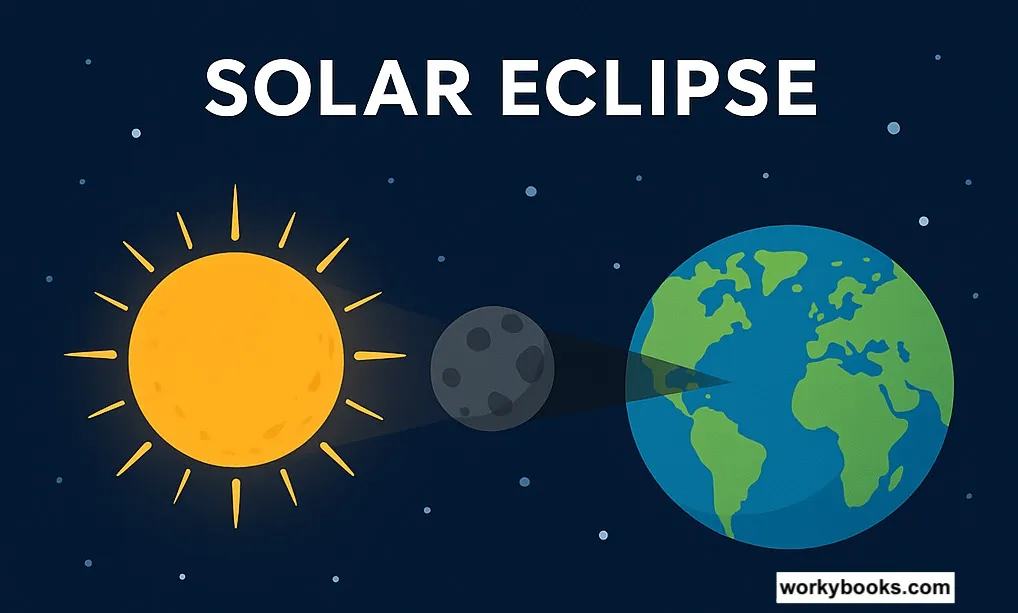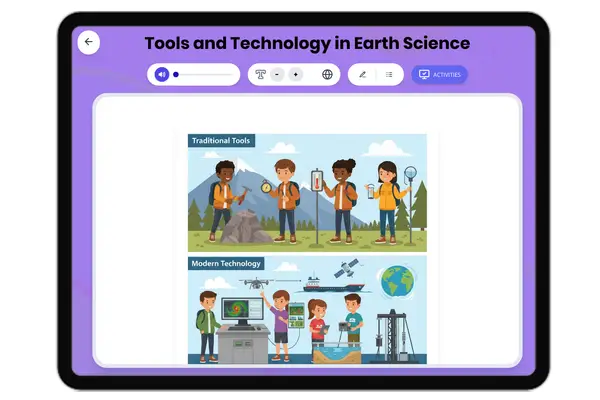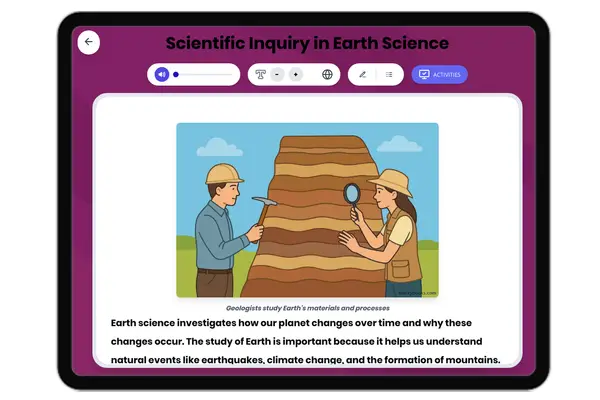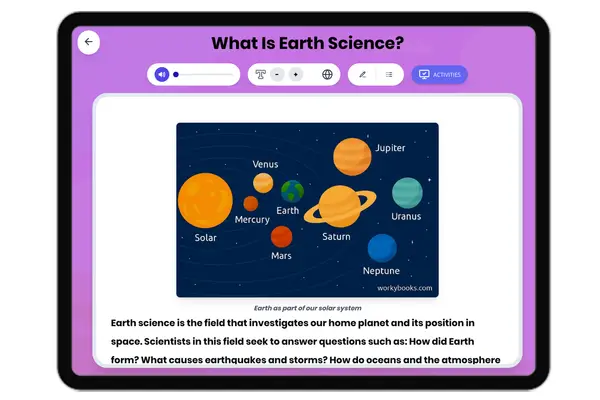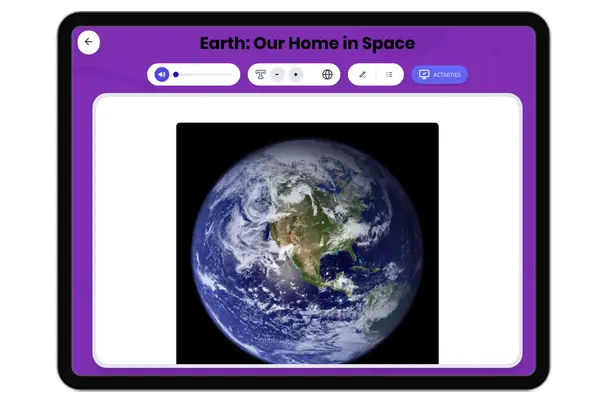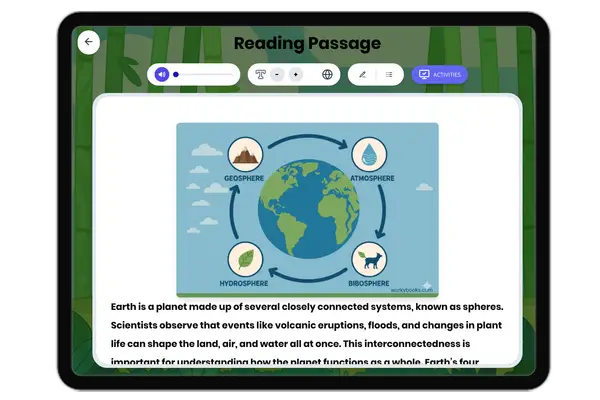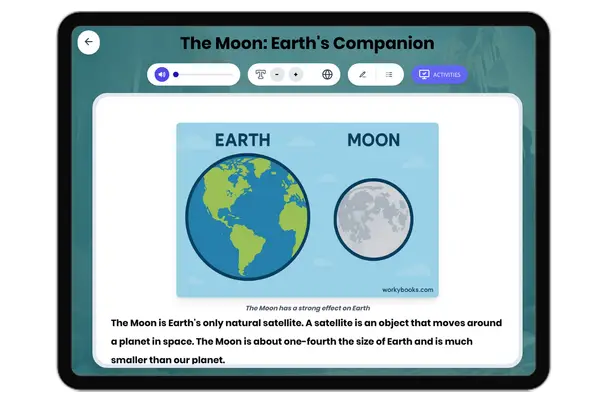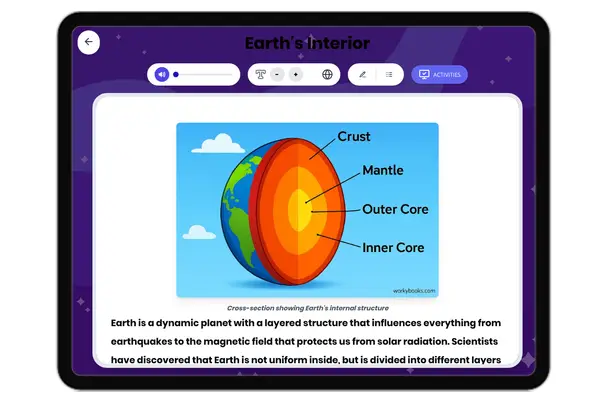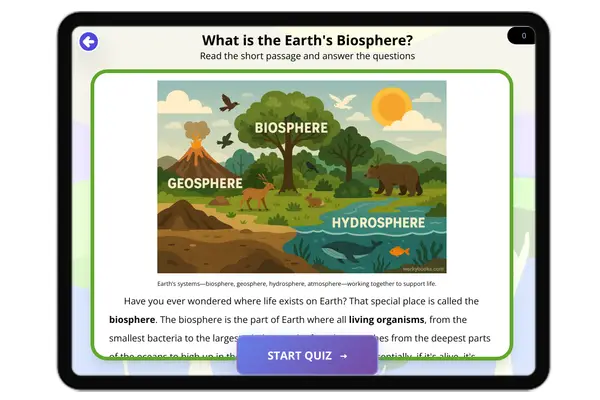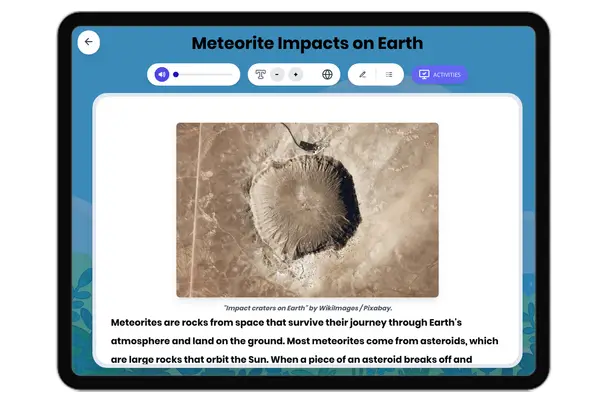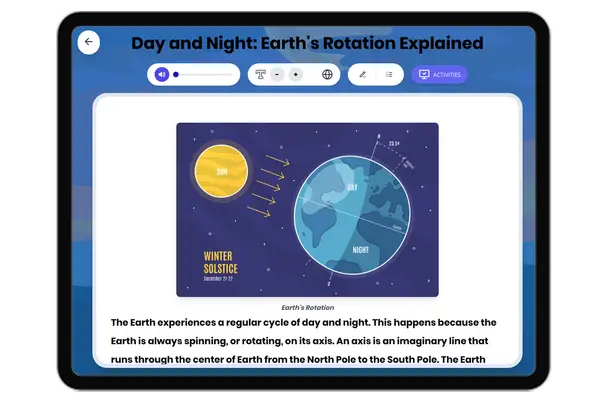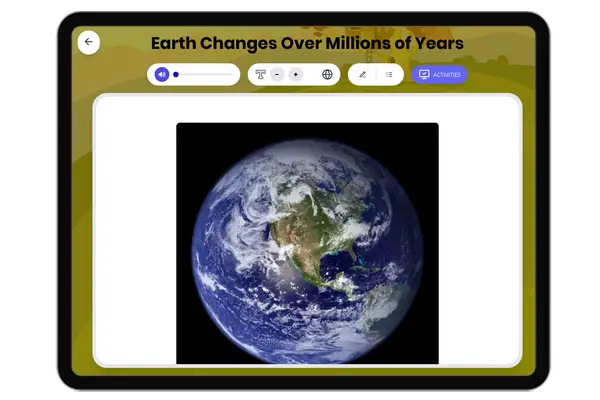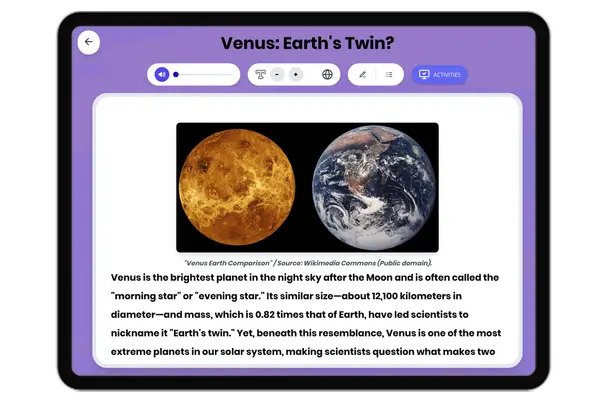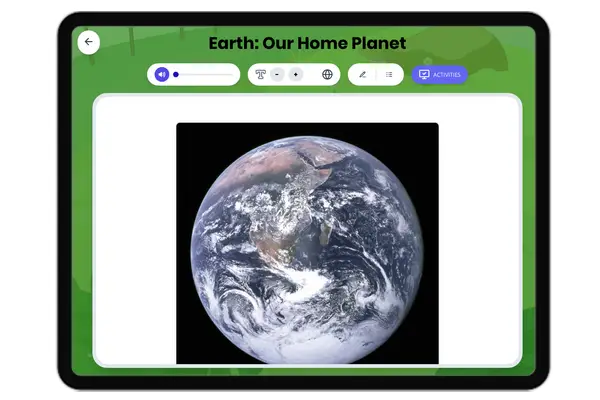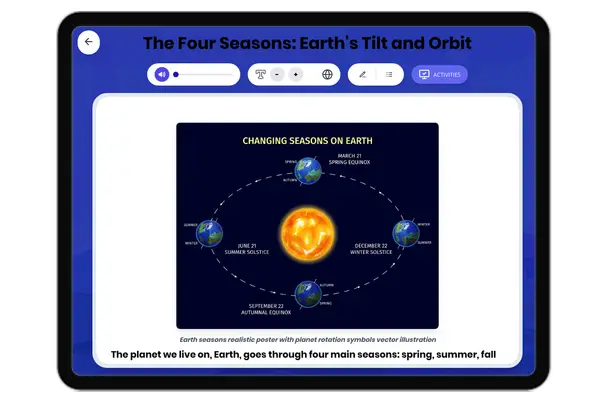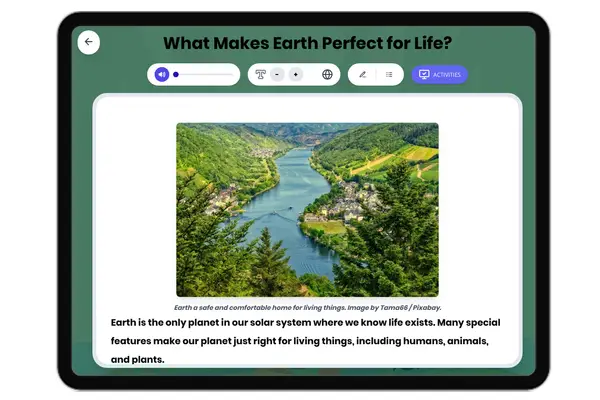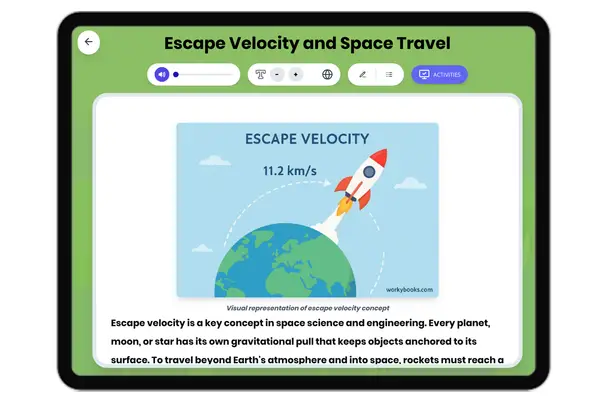How Often Do Solar Eclipses Occur — Reading Comprehension
Premium Resource
Grades
- 6
PRINT+DIGITAL RESOURCE
This learning resource is available in interactive and printable formats. The interactive worksheet can be played online and assigned to students. The Printable PDF version can be downloaded and printed for completion by hand.
About This Reader
This educational reading passage, 'How Often Do Solar Eclipses Occur,' delves into the fascinating world of solar eclipses, explaining the science behind these celestial events. Students will learn about the **Earth-sun-moon system** and the **cyclic patterns** that lead to both **solar eclipses** and **lunar eclipses**. The passage defines key terms like **umbra** and **penumbra**, and differentiates between **total solar eclipses** and **annular solar eclipses**. Designed for a Grade 6 reading level, it simplifies complex astronomical concepts. Aligned with NGSS MS-ESS1-1, this passage supports students in developing and using a model of the Earth-sun-moon system. The content is audio integrated to enhance accessibility and learning, making it an engaging resource for understanding how often solar eclipses occur.
Perfect For:
👩🏫 Teachers
- • Reading comprehension practice
- • Auto-graded assessments
- • Literacy skill development
👨👩👧👦 Parents
- • Reading practice at home
- • Comprehension improvement
- • Educational reading time
🏠 Homeschoolers
- • Reading curriculum support
- • Independent reading practice
- • Progress monitoring
Reading Features:
📖
Reading Passage
Engaging fiction or nonfiction text
❓
Comprehension Quiz
Auto-graded questions
📊
Instant Feedback
Immediate results and scoring
📄
Printable Version
Download for offline reading
🔊
Read Aloud
Voice-over with word highlighting


